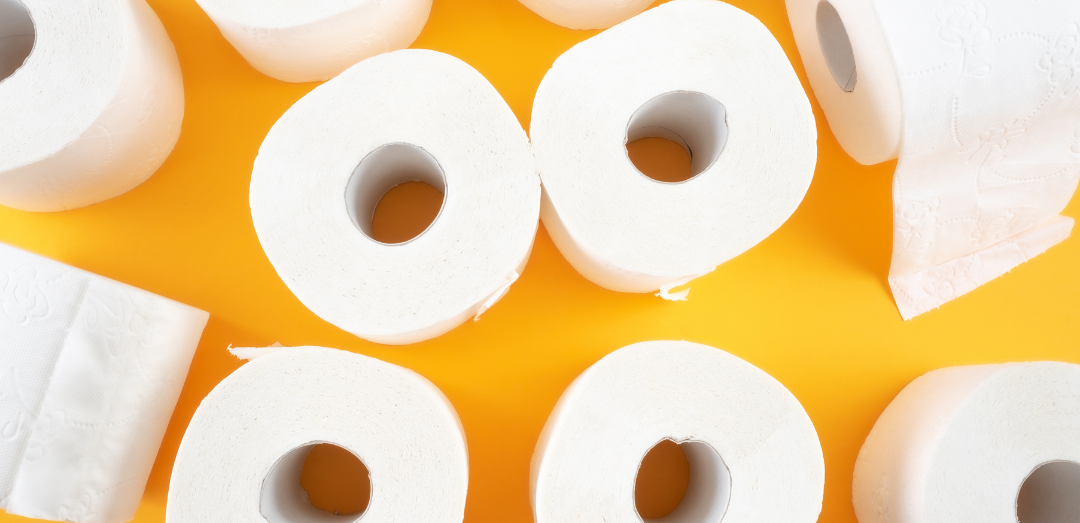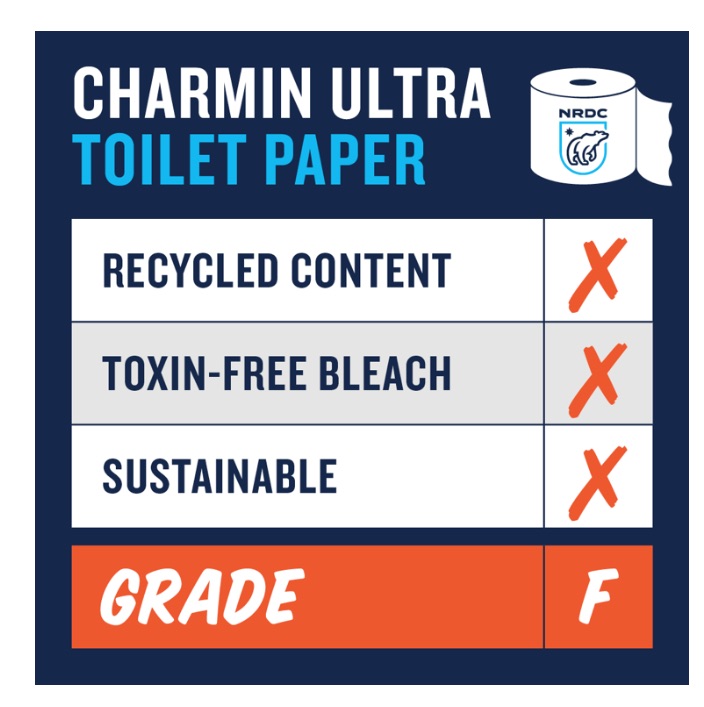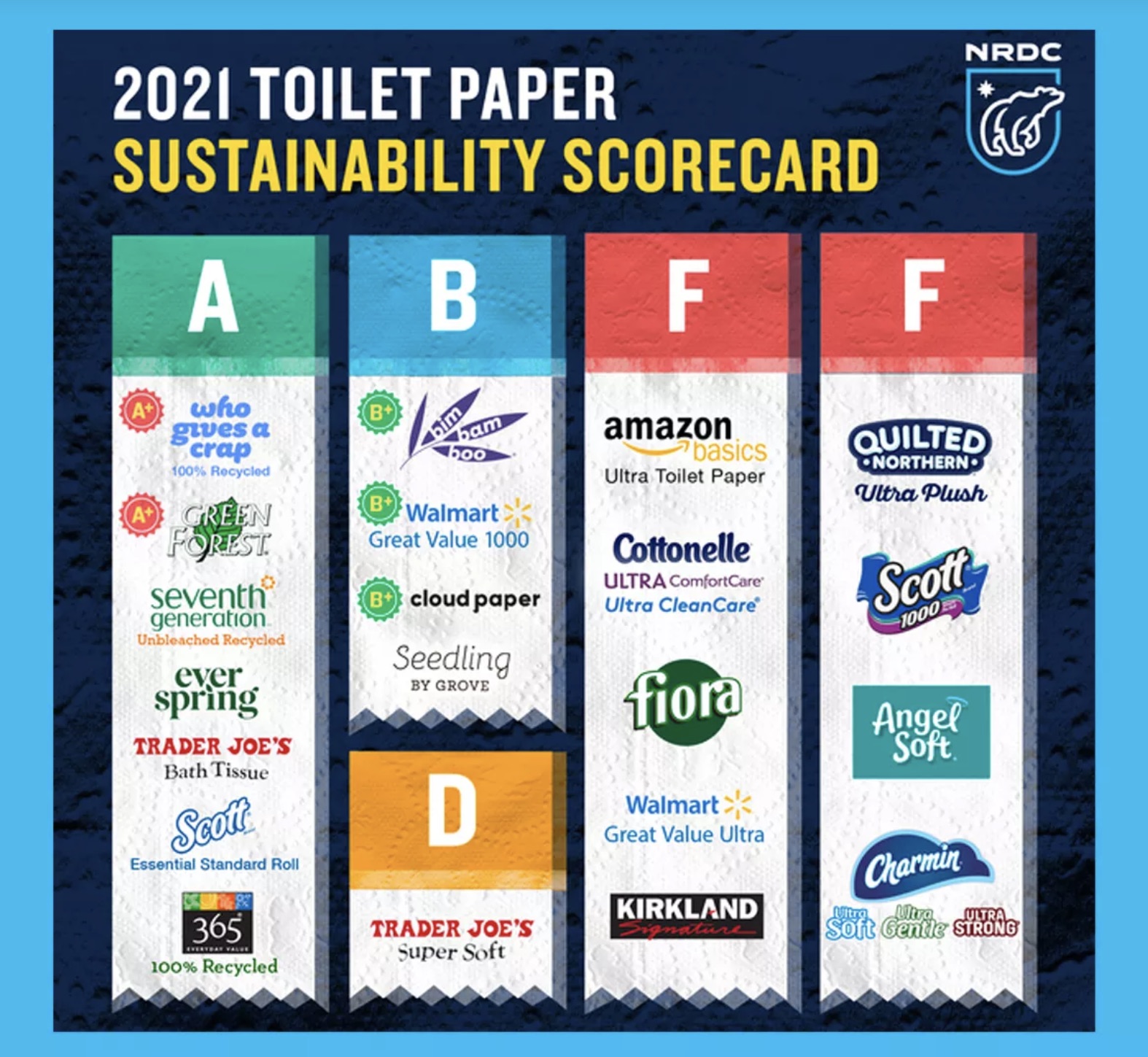
I have heard Maya Angelou say this phrase, “When you know better, then you can do better.” I use this phrase to encourage others and myself when I discover information that I wish I had known earlier. This is how I felt when I learned that it takes 37 gallons of water to make one roll of toilet paper. I learned this from an article by Treehugger’s Lloyd Alter. That is too much water to waste just for toilet paper. That is why I have made a change in my personal life and why I recommend my clients and community to do the same.
You are quite familiar with toilet paper. But have you considered the waste produced from the very product you use to take care of your own waste? I have, and it is time that you do too. In order to learn why toilet paper is wasteful, you need to understand how the current industry is unsustainable and the sustainable choices you can make right now to positively affect the planet.
What is virgin pulp?
Toilet paper is made from wood pulp. Virgin pulp is wood pulp produced from trees specifically grown to be used for products like toilet paper, notebooks, and other single-use goods. This is a wasteful cycle all over the world that is rapidly reducing the number of trees on our planet.
Tissue products made from virgin pulps and fibers have a substantially higher carbon footprint than alternative options. Over three times as much carbon is used in virgin pulp processing and manufacturing than other types of pulp.
The United States consumes more virgin pulp toilet paper than any other country:
- 9.2 billion pounds each year
- 28 pounds per person
- 59 percent of Canada’s pulp and paper exports went to the United States (2017)
The production of virgin pulp uses twice as much water as producing tissue from recycled materials and generates twice as many hazardous air pollutants. Pollutants include:
- Formaldehyde and acrolein which contribute to respiratory issues
- Excessive creation of sulfur dioxide as a wasteful byproduct
- Releases particulates, which contribute to smog
Northern bleached softwood kraft
Northern bleached softwood kraft, or NBSK, is a type of softwood pulp sourced from Canada, and is the most desired grade of softwood pulp for tissue products in the United States. Toilet paper and facial tissue in North America typically consist of between 20 to 40 percent NBSK pulp.
 My husband loves Charmin because it is so soft. That is why I have bought it for years.
My husband loves Charmin because it is so soft. That is why I have bought it for years.
But not anymore. Now, we’ve transitioned to bamboo toilet paper in our household for the last month. I have not heard a word of complaint.
To create that softness, the tissue comes from virgin trees specifically from NBSK pulp originating from the Canadian boreal forest.
This is a handy chart that I used to make more informed purchase decisions about toilet paper and other toiletries. Work to support the companies that achieve an A rating and stop supporting D and F-rated brands.

Our forests are disappearing. Our animals are dying.
Why are forests crucial to global warming?
The boreal forests of Canada are storehouses for carbon. It is mother nature’s way of preventing excessive heating of the earth. In the past 20 years, the logging industry has removed 28 million acres of Canadian boreal forests.
Forests are the lungs of the earth. Trees breathe what we cannot—carbon dioxide. They convert that into oxygen, which we breathe. The Canadian boreal forest absorbs about a quarter of all human-produced greenhouse gases from the planet. If the forest continues to shrink at an unsustainable rate, our planet’s greenhouse gases will continue to climb at dangerous rates. We are heading for a future of changing climate, extreme weather, and an overall rise in temperature across the planet.

What are the alternatives to virgin pulp and fibers?
If we continue to use virgin pulp-produced products to clean ourselves, our home and forests will continue to suffer. Before we know it, there will not be enough trees to produce the products we depend on. Something needs to change. Here are five alternatives to virgin pulp that the industry must move to and adopt across the board:
Wheat straw
Wheat straw and other substances left behind after the harvest, often known as agricultural residues, can be particularly sustainable alternatives to wood fibers.
Bamboo
Bamboo, an intentional crop, has a fraction of virgin fiber’s impact on forests and the climate but a greater impact on farming land than wheat straw. Here are some of the best reasons why bamboo is a strong replacement for virgin pulp:
- highly versatile plant
- requires less land degradation than virgin pulp production
- grows 20 times faster than trees
- Fully grown bamboo can be used in just four months versus the 10-30 years its takes to grow trees
- releases 30 percent fewer greenhouse gas emissions
- grown in recently deforested areas
Bamboo pulp products are sold wherever you can buy toilet paper. Look for Forest Stewardship Council’s certification, or FSC, on products before you buy. That way, you know this is a product that aims to responsibly source and sustain toilet paper production.
Bleach
Bleach is used to whiten, strengthen, and soften tissue products.
Until the 1990s, tissue producers used elemental chlorine in their bleach, which emitted large quantities of dioxins into the water and air.
Dioxins are persistent toxic chemicals that do not disappear. They are bioaccumulative, which means they build up in the food chain, increasing health risks to animals and humans. Dioxins can also cause reproductive problems, diabetes, and allergy development. Humans can absorb toxins through the air or water or by using and consuming animal products that have become contaminated.
Now, bleached products are safer and a better alternative to virgin pulp.
Post-consumer recycled content
The EPA recommends bathroom tissue be made of 20 to 60 percent post-consumer recycled content. Here are the key terms you need to know and understand to make more informed purchase decisions:
- Post-consumer fiber is paper captured from homes and offices and does not include newsprint returns or overruns
- Recovered fiber is scrap made from mills that must be repulped. It does not contain residues, like sawdust.
Bathroom tissue must contain more post-consumer recycled content to reduce the impact on our environment. Here is a blog from Treehugger comparing post-consumer recycled toilet paper and bamboo toilet paper.
Recycled paper
Recycled paper products use less toxic bleaching methods, such as processed chlorine-free, or PCF. The PCF bleaching process uses oxygen, ozone, and hydrogen peroxide avoiding chlorine. Plus, recycled tissue requires less bleach overall. Click here to read a helpful procurement guide for businesses and agencies from the EPA.
Who is responsible for over logging and deforestation to produce toilet paper?
What can we do right now?
As the market for toilet paper grows around the world, recycled products and alternative fibers will be the only way to meet the increased demand without adding more stress on indigenous peoples, the climate, and biodiversity.
The toilet paper industry is inconsistent in its approach to sustainability, with some companies using significant recycled content and others using none. Tissue products from companies such as Green Forest and Natural Value contain 100 percent recycled content contrasted with major brands such as Charmin, Cottonelle, and Angel Soft, which are made from virgin fiber.
Make a commitment to take one of these actions. I have assigned a rating of green, greener, or greenest to make it easier for you to understand the impact your decision will have. I got this idea from author Lori Bongiorno’s book, Green, Greener, Greenest: A Practical Guide to Making Eco-Smart Choices a Part of Your Life.
- Green: reduce tissue consumption. If you intend to purchase traditional toilet paper, make sure it’s made from 20-60% post-consumer recycled content
- Greener: Avoid supporting unsustainable deforestation by using toilet paper made from responsibly-sourced bamboo.
- Greenest: Use reusable cloth wipes or bidets
Solutions promoting healthy forests and a livable planet already exist. Companies and consumers need to value this change as a priority.
We are in this together. Let’s go green.

